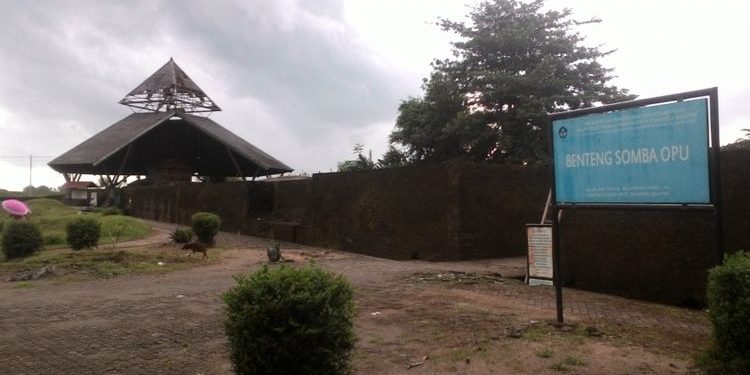In ancient times, this fort was used as a trading center and also a port for spice products. Until finally in the 1990s, the Somba Opu Fort underwent reconstruction so it had a better appearance.
For those of you who want to have a historical tour, this fort is the right choice. Inside the existing fort, you can also find traditional houses typical of the area. Along the coastal area in Makassar City, Fort Rotterdam, and Somba Opu Fort as symbols of resistance against Dutch colonialism.
Fort Rotterdam is located on the northern coast of Makassar City adjacent to Losari Beach, while Somba Opu Fort is located on the south coast of Makassar City.
It’s just that, thisSomba Opu Fort is located in the Gowa Regency area which borders the Makassar City area. These two forts witness the history of Makassar and the Kingdom of Gowa against colonialism in ancient times. Somba Opu Fort was founded in the early 16th century, to be precise in 1525 on the efforts of the 9th King of Gowa Karaeng Tumaparisi ‘Kallonna which was then continued by Karaeng Tunipalangga Ulaweng.
In 1545, Karaeng Tunipalangga Ulaweng (the 10th King of Gowa) strengthened the fort’s wall structure with solid stone. During the reign of Tunijallo (King of Gowa XII), the fort began to be armed with heavy-caliber cannons at every corner of the bastion.
This fortress has an area of 113,590 square meters which is flanked between two rivers, namely the Balang Baru River and the Jene’berang River. In its history, this fortress was fortified with heavy cannons. One of them was still in this fortress, the length of a cannon was about 9 meters. This fortress was not only the center of defense for the Kingdom of Gowa but was also the center of the spice trade and port.
Many traders from other regions such as Bugis-Makassar, Malay, Asian, and even European trade here. This historical relic becomes a silent witness in ancient times and still visited by local and foreign tourists.
Within the Somba Opu Fort area, there are many cultural heritages in the form of traditional houses of various tribes in South Sulawesi and West Sulawesi.
In addition to traditional houses, in the Somba Opu Fort area, there are also several museums that house historical objects, including a large cannon which is about 9 meters long which is also stored and preserved in the museum.
To get to Somba Opu Fort, visitors must pass a long iron bridge that crosses the Jene’berang River. After crossing the iron bridge that can be passed by two streams of four-wheeled vehicles, visitors will get directions to Somba Opu Fort.
On the way, officers of Somba Opu Fort will ask for a fee of IDR 3,000 per traveler. However, before that, visitors will find a bathing place and a zoo called Gowa Discovery Park which is managed by the private sector.
The creation of the Gowa Discovery Park caused a polemic between the people of Makassar and Gowa against the South Sulawesi Provincial Government and the Gowa Regency Government.
The people fought the government of the ‘Yasin Limpo Dynasty’ that was held by Syahrul Yasin Limpo and the Regent of Gowa was held by Ichsan Yasin Limpo so that the construction of Gowa Discovery Park was managed by the private sector.
When entering the Somba Opu Fort area, the road made of brickwork looks like it’s starting to break down and some even have wallows. In addition, there are a number of traditional houses that have become cultural preserves that have begun to deteriorate with age and receive no less attention.
Although the care and maintenance are under the government, there are also levies and rental of traditional houses to be used for various activities. However, the condition of Somba Opu Fort and traditional houses did not receive attention and care. Somba Opu Fortress is the face of getting to know existing history again.
However, this appreciation for historical witnesses seems neglected which has been eroded by the times.



